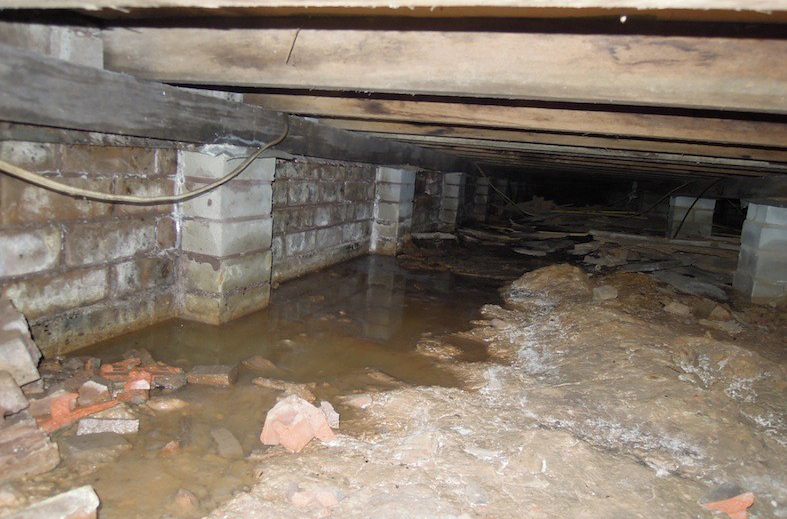Why does that downstairs room always smell damp and what’s causing those stains on the walls?
Split level buildings and homes with basement rooms or lower storey additions often suffer from ongoing damp related problems due to poor building design and a lack of site drainage.
The site topography (slope of the site) can direct stormwater toward the building and into the subfloor areas. Once in the subfloor this water often has no way of escaping and will cause a range of problems and damp issues.
Basement and lower storey rooms often do not have enough separation between the building elements and the damp subfloor soil. This moisture seeps into the walls and floors slowly over a period of time, causing damage to internal finishes.
The key to any remedy involves stopping water from getting to the building or room in question and giving this area a chance to dry out.
Good external surface drainage (strip drains) are essential to collect stormwater and direct away from the building into the stormwater system.
Subfloor drainage around the room is often required to collect water that finds its way into the subfloor and direct it out of the building.
External ground levels must be lower than internal floor levels by at least 75mm and external paths must slope away from the building.
Soil in the subfloor must not be heaped up against internal walls and must be lower than the lowest floor level in the basement room or other habitable area.
Sometimes more complex remedies include subsoil drainage pits dug deep around the building to collect ground water before it enters the subfloor.
Good damp proof building practice is essential in the rooms / building to prevent the absorption of water. Brickwork must have a damp proof course (DPC). Timbers must be separated from damp masonry and concrete with DPC and concrete slabs must have adequate plastic vapour barrier installed at the time of construction. Double brick and brick veneer construction must have clear cavities to prevent moisture bridging.
To aid the drying out process improved subfloor ventilation is required. Often an active fan system with with negative and positive air flow (one fan pushing air in and one fan pulling air out) can be highly effective.
This house on the North Shore in the image below had a steep backyard sloping toward the back of the house. The home was built with no provision for site drainage. Large pools of water were found in the subfloor up to 100ml deep. A series of damp related problems were found inside the house and the chipboard timber floor would require complete replacement costing in excess of $30,000.

These problems are very expensive to rectify once a building has been constructed and landscaped. We recommend a building inspection be carried out on any prospective house purchase.
